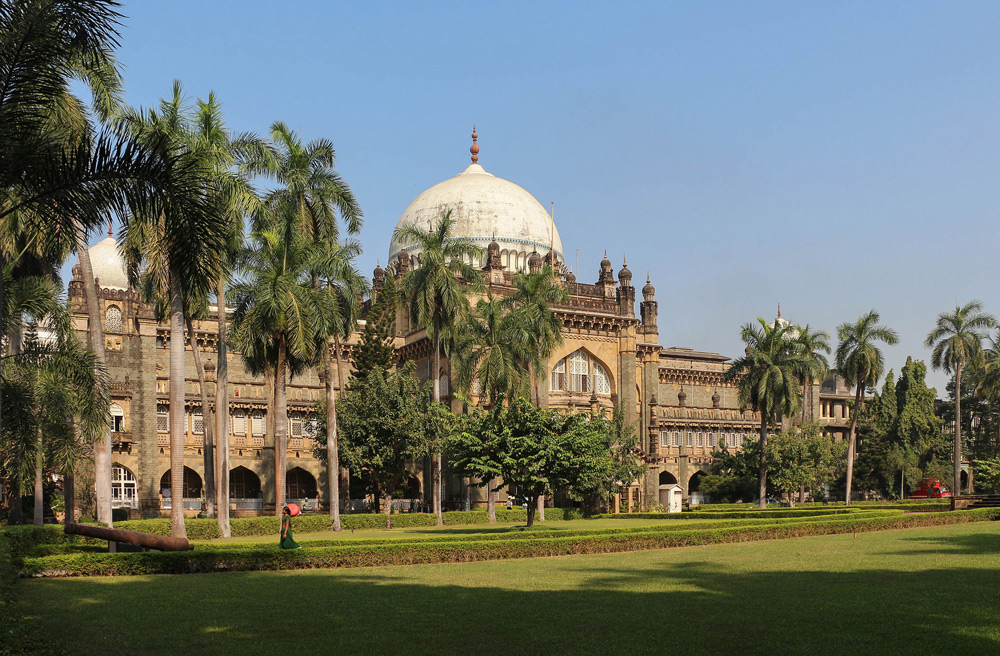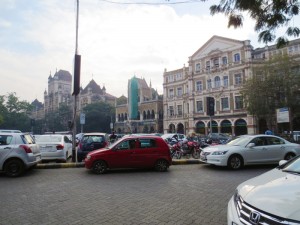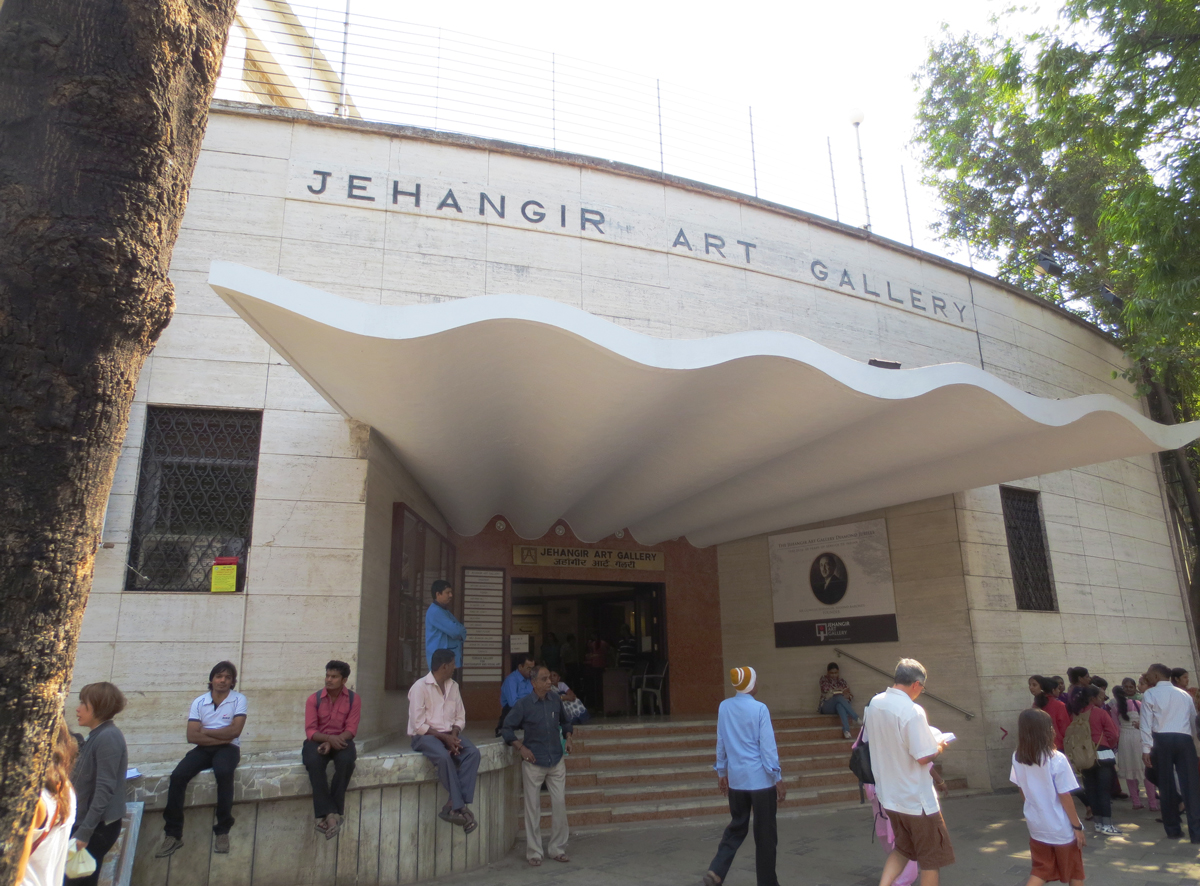
On 12 September 2014, Shripad Naik, head of the Ministry for Tourism and Culture for the Government of India, announced the ministry’s intention to fund the transformation of Kala Ghoda, the preeminent arts district of Mumbai, into ‘the equivalent of Times Square, New York’. The minister appears to admire the latest post-Disneyfication, post-9/11 version of the New York tourist mecca. For in addition to water fountains and illuminated billboards, the press release promises a fifteen-foot illuminated Indian flag, lit plastic steps on which to sit, and wandering street performers. The performers will be paid salaries to pose with tourists as characters from Indian films and cartoons. As the press release carefully notes, they will not expect tips.

The art and heritage communities reacted with a mixture of bafflement and anger. Newspaper articles published after the release featured a host of architects and planners from around Mumbai pointing out obvious problems with the plan. The small crescent-shaped intersection called Kala Ghoda is already overloaded with three museums, a variety of small shops and restaurants, and some five or six major bus stops. It is always choked with traffic, much of which already comes from tourists of all classes, both Indian and foreign. Its late-nineteenth-century buildings are two to three stories high and covered with elaborate, painstakingly restored facades. Not only would it make little aesthetic sense to cover them with huge flashing billboards, it is doubtful that they could support them safely. The architects helpfully suggested half a dozen alternative sites where such a development would make more aesthetic and practical sense.
What might have possessed the minister to choose Kala Ghoda for this treatment? And why was it met with such a dramatic and immediate response?
While it is always difficult to guess the intentions of others, a clue might be found in the recent history of the Mumbai neighborhood.
For the past fifteen years, the Kala Ghoda Association has worked to establish the area as a thriving arts district. It has systematically restored its colonial-era buildings while attempting to provide modern amenities, like benches and a parking lot. The association also sponsors the Kala Ghoda Arts Festival every February, a huge set of performance and art events that have become more and more popular (and populist) since they began in 1999. Although largely promoted as a heritage movement, the association has been very savvy about what might produce a thriving environment. As a result, Kala Ghoda is lively day and night, hosting some of Mumbai’s most iconic shops and restaurants.
But the Kala Ghoda Association, and the heritage movement that drives it, is often dismissed as exclusive and elitist. So, too, is art. Accusations of elitism have been potent tools for those attempting to change the character of this neighborhood before. In the wake of the 1992-3 riots in what was then called Bombay, the militant Marathi regionalist political party Shiv Sena went on a renaming spree, targeting buildings and institutions with names from the colonial era. That included the city itself, which became Mumbai in 1995. Kala Ghoda’s own Prince of Wales Museum was renamed the Chhatrapati Shivaji Maharaj Vastu Sangrahalaya, mercifully known by its acronym of CSMVS. But unlike the nearby intersection of Flora Fountain, which was renamed Hutatma Chowk (Martyr’s Square) and is now the site of a monument in honor of fallen activists in the movement to create the Marathi-speaking state of Maharashtra, Kala Ghoda was largely unchanged. It kept its name, which translates to ‘black horse’ and refers to a long-banished equestrian statue of the Prince of Wales who later became King Edward VII.

The heritage movement began to refurbish the area just a few years after the Shiv Sena attempts to anchor the cosmopolitan city of Bombay, now Mumbai, to a Maharasthrian historical narrative. The Kala Ghoda Association embraced the hybridity and frank mimicry of colonial architecture, with its wild combination of revivalist styles. It also tapped the deep resources of the artistic community, whose central public institution was the Jehangir Art Gallery, which was built in 1952. The gallery, which is rented out by artists on a weekly basis, shows work appealing to a wide array of tastes. It is the least threatening contemporary art space I have ever seen. Its design includes a wide, undulating modernist awning, which shades the mixture of students, workers and tourists taking a rest on its cool marble steps. Although elite commercial galleries no longer mount shows there—they often cannot, because of artist stipulations regarding security and climate control—the art community continues to call the neighborhood around the Jehangir its own. Almost all of the city’s commercial galleries are within easy walking distance.
This is the territory into which the central government has now entered, carrying the national symbols and globalised dreams of a patriotic, Disneyfied Mumbai with them. It is possible that their gesture is borne of a genuine interest in claiming the city of Mumbai for the nation, against both the Shiv Sena’s Maharashtrian dreams and the heritage and art community’s cosmopolitan embrace of the colonial past. Or, it might have something to do with negotiations between the ruling Bharatiya Janata Party and Shiv Sena over seats in the upcoming Maharashtra state elections. Either way, it has the artist community up in arms, ready to defend their small slice of the city.